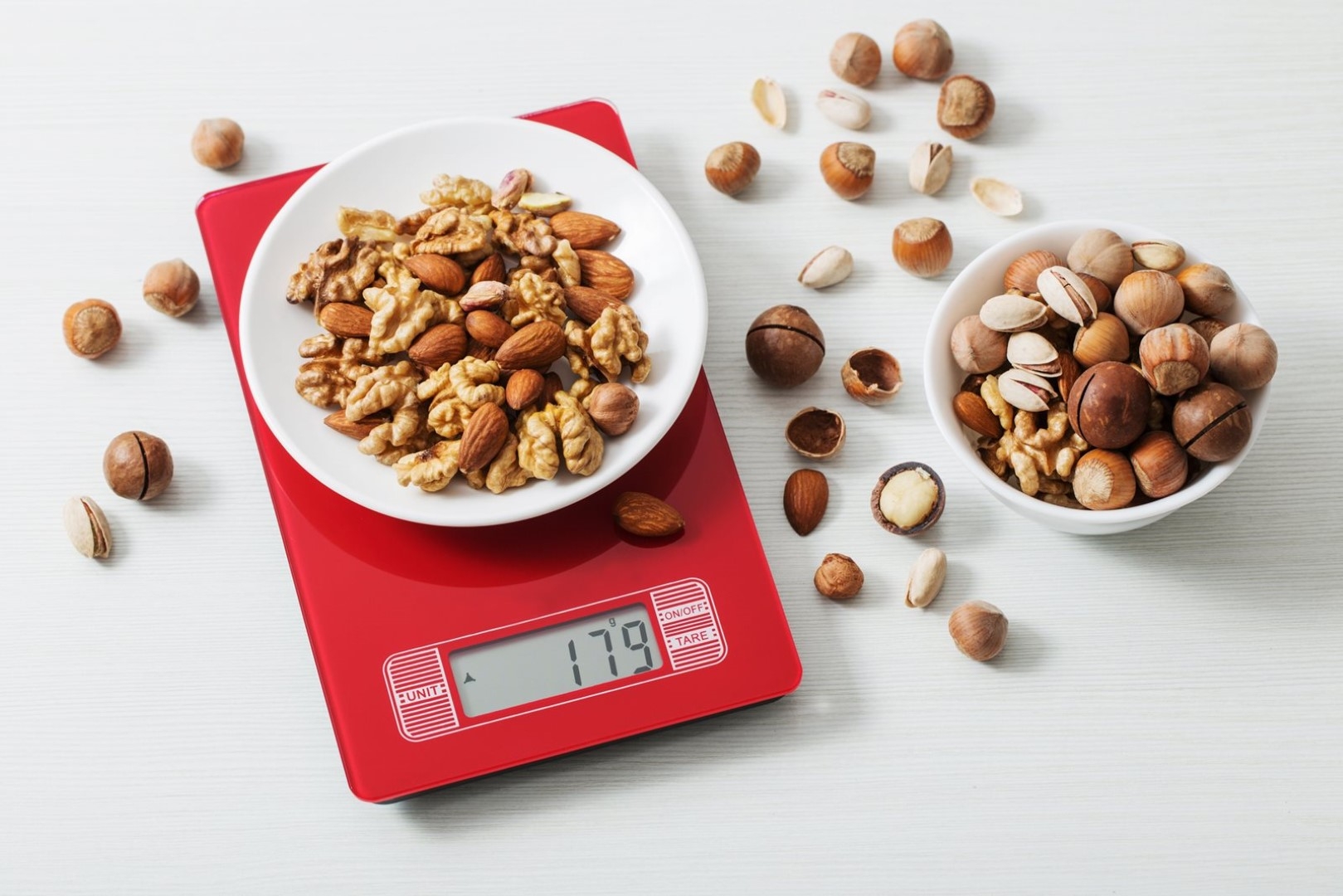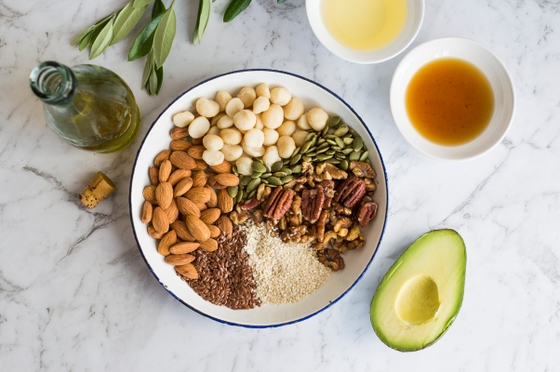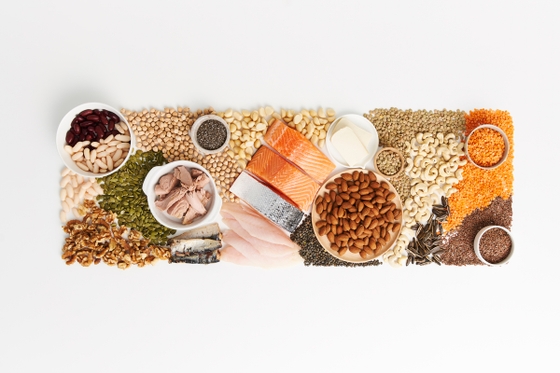
10 ways to get the right balance of fats
Getting the right balance of fats in your diet can improve your heart health.
1. Go nuts
Include a handful of nuts (30g) every day. You can add them to salads, yoghurt, cereal, salads, and stir-fries. Choose unsalted, dry roasted or raw varieties. Nuts are a good source of monounsaturated fats, and omega-3 and omega-6 polyunsaturated fats.
2. Serve up some fish
Include fish or seafood in your family meals 2-3 times a week for a dose of omega-3.
3. Use healthier oils
Some oils are more suited to cooking and others help add flavour to foods:
For salad dressings and low-moderate temperature cooking (e.g. stir frying or warming food in a pan) choose olive, extra virgin olive, peanut, canola, sunflower, safflower, avocado or sesame oil.
For high-temperature cooking, especially frying, choose extra virgin olive oil, high oleic canola oil, or high oleic peanut oil. These types of oils are more stable at high temperatures.
Make sure to store oils away from direct sunlight and don’t re-use oils that have already been heated.
4. Use healthier fat spreads
Up to 50 per cent of the fat content in butter is saturated fat and 4 per cent is trans fat. Swap to nut butters, avocado, tahini or margarine made from olive, canola, sunflower oils.
5. Limit junk food and unhealthy takeaways
Foods like biscuits, cakes, pastries, pizza, deep-fried and takeaway add the most saturated and trans fat to Australian diets.
6. Trim visible fat
Cut off any fat and skin from meat, game and poultry. This helps limit saturated and trans fat.
7. Avoid processed meat
Swap processed meat such as salami and bacon with healthy protein sources, such as chickpeas, roasted or grilled meats, eggs, or canned tuna or salmon.
8. Eat more legumes (such as like beans, lentils and chickpeas)
Try to include legumes in at least two meals a week. Eating these in place of meat and poultry helps to limit saturated and trans fat.
9. Read food labels
Check the ingredient list on food products for ‘hydrogenated oils’ or ‘partially hydrogenated vegetable oils’. You should avoid these foods as they contain unhealthy trans fats.
10. Cook heart-healthy recipes
Recreate your favourite recipes using healthy-fat ingredients, such as nuts, seeds, avocados, olives and their oils.
Browse our range of heart healthy recipes
You might also be interested in...

Fats, oils and heart health
While eating fatty food may sound like a bad thing, some fats can play an essential role in keeping your heart healthy.

Healthy eating and nutrition resources
Small changes make a big difference – these nutrition resources can help you adopt heart healthy eating patterns by showing you how to make small changes that can continue long term. We have developed these resources that translate the latest nutrition evidence for use in your everyday life.

Protein and heart health
Healthy proteins can part of a heart-healthy diet. However, each can impact your risk of heart disease differently. Find out more the best food protein sources.
Last updated21 February 2024